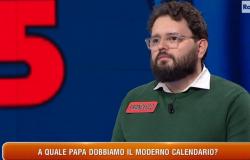I never thought I would do a photography project about death until I met a stranger named Jardin on a riverbank. I told him that I had lost someone I loved very much, he listened to me for a long time and concluded by telling me: “I can even cry for you”. His involvement that day gave me the courage to break the taboo on the topic. Jardin agreed to be my self-portrait, in the sense that I photographed him on the river to express my mourning (it is the last image you see in this investigation). I didn’t feel the need to put myself in front of the camera, to perform my pain; I felt more the need to meet other human beings, to hold hands, to ask another to inhabit a space that is taboo, you don’t go to dinner and say that you suffer because someone died, right? Instead, photography allowed me to do something unprecedented, to ask someone to occupy that painful space with me. After the photo I felt that Jardin and I had shared something great. So I went in search of other people who had suffered terrible losses and I always photographed them on the river. At the beginning of the project my interest was mourning (it also coincided with the historical moment in which we experienced what psychologists call “interrupted mourning”, due to Covid funerals and reunions could not be celebrated). Very soon, however, the physical river became, instead, the one between life and death and I began to ask myself: can I investigate this river with photography? Can we find peace in the face of the terror of death? Can we accept the unacceptable without becoming cynical?
These questions open up many scenarios. I chose to investigate an entire territory: transplants, mediums, near-death experiences, fatal accidents, undertakers and undertakers, end-of-life doulas, people who empty homes, severe burn victims, forensic medicine, hospices, hospitals, extreme sports, suicides, Paleolithic burials. I even had someone fake his death and act like it was real. I don’t want to make a project just about people, but also about places and symbols, but skipping cemeteries and skulls, that is, everything we already have access to, that we already know and see. Plus, there’s a world of bizarre things related to death; if you search, you will find everything, but that’s not what I want. The macabre and the Gothic are a cultural phenomenon, not a real one. I’m interested in real experiences in order to bring people closer to a universal existential theme which is probably the last real taboo in our society, challenging stereotypes and prejudices. After Covid I started sending lots of requests to places where there had been real massacres, like Bergamo, and the first year I received “no”s from the victims’ families associations all the time, with emails that they literally said “we can’t take it anymore”, “we don’t want to talk about it anymore”; they had already done it for a whole year, Covid was disappearing and they didn’t want to hear about it anymore. I thought this project would be a total failure; instead, by waiting several months and holding on, it is as if – once a small and tumultuous wave ended – another slower, but much bigger one had begun: I noticed that after Covid there was a particular sensitivity on the topic of death, many realized that we couldn’t just make it disappear like before, and were willing to think about it and talk about it. All my longest and strongest works have to do with spirituality and the meaning of life; therefore, it seemed natural to me to have landed on this. I started from the study: to see you need to know, otherwise you risk being a tourist in other people’s drama. I prepared the ground within myself, always with this desire to open doors and not close them thinking “ok, now I understand everything because I read a book”. Believing you understand everything is the worst thing. I will find the answers through the process of making images.
I started studying paleontology, and the time in which we began to bury our loved ones with rites and funerary objects (one of the first ritual burials in Europe, which dates back to 25 thousand years ago, is found in Liguria). The etymology of human being is “being that buries”. I discovered that we, unlike animals, do not live in the present, everything around us comes from the dead. Death and culture work for the same thing, they are at the service of the human beings of the future and they do it in a different way: death takes away, makes room for those who are yet to come and culture preserves so that it can be transmitted to those who are yet to be born . Nietzsche said that living beings are a very rare species of that which is dead. The project led me to seek help from the University of Padua which has a Death Education department: it is one of the few in the world that studies psychology in relation to death and I collaborate with them by teaching a master’s degree. There is a social benefit if a faculty deals with this topic: death triggers a series of irrational responses in our immune system and it is important to understand how people then navigate the political choices of life. According to the “Terror Management Theory” the fear of dying causes great changes.
There is also a practical aspect of the master’s degree: in Italian society before, with extended families, it was easier to care for children, but also for the elderly, while now the generation between 40 and 60 years old, which is very important and could do great things, is completely crushed between the their children and parents, and does not receive any kind of help. The university also raises awareness of the fact that a series of psychological, health and para-health structures are needed that must support society in this area. And there are other issues: who takes care of the doctors who work at the end of life? Furthermore, it is a sector in which many professions are not yet recognized and are carried out by volunteers. In various operators linked to the end of life I have seen the care and love they put into what they do: I had heard terrible stereotypes, such as that of the undertaker who throws the bodies into a black bag without thinking about them, as if they were an object, while there are people who sometimes, due to personal events, have had the experience of someone’s death when they were young and this opened up a world for them, like Irene, a thanatoesthete that I met and portrayed, who talks to our deceased, caresses them, cares about them takes care. In my experience, when you approach death there is little individualism and narcissism among volunteers and doctors: you wouldn’t last, it’s giving for the sake of giving, no one makes a monument to you, on the contrary, we live in a society where people cheat because you work with the dead. I met and photographed Nina, an end-of-life doula, a profession not yet recognized in Italy, and therefore a volunteer, who created a complex experimental death education program: “Words of Life”, dedicated to autobiographical writing and the collection of testimonies for develop the meaning of life and care for others. “Words of dreams”, however, introduces the content of the Living Will and accompanies people at the end of life as if it were a second birth. I met and photographed the musicologist Davide who works in the oncology department of the Gaslini hospital. With his music he helps patients, but also doctors and nurses, because in these departments there are terrible noises day and night from machines that keep people alive but which are very disturbing. He created a way in which these noises become just a sound with a rhythm to be assimilated to other sounds produced by patients using instruments. He does something very concrete, he harmonizes patients with what bothers them, or he makes them emit those notes which, when sung, allow them to feel as little pain as possible; he spends all his time with terminally ill patients, he has the need to give where there is most need. Giovanni, a boy who almost died ten years ago, wanted to tell me only one thing a million times: about the time, not yet knowing if he would be saved after a long coma, he took his first breath, even though, after recovered, he lost his affections and work from his previous life.
It comes back differently in many testimonies the resistance and passion for life of human beings: even in the most incredible disaster people talk about light, love, contact, breathing, and even those whose days are numbered tell you how life is now it’s at a higher volume. I have often heard from both the most spiritual people in perfect health and those at the end of life the realization that what really matters is the love you have given to others because it lives, will always remain, while what you brought home for yourself , what you greedily put inside, will die with you. The reminder to let go, that you are not the center of the universe, returns in these testimonies, it is as if those who are closest to death can no longer tell lies to each other. Obviously it is also the realm of mystery and mysteries and people give different explanations: I also collect many incredible stories on which I exercise positive skepticism, I have to remain doubtful but open, I don’t give an answer, I welcome these stories, I don’t fall into them, but I listen to them. We are a crazy machine for giving meaning to things, and in that area between life and death people are even more inclined to do so, they see symbols, signs. Investigating mourning and illness is investigating a great struggle to continue living. But when I started to get closer and closer to the death of those who don’t want to die, all my plans, all my psychology, all my theories exploded. The end requires silence, rigidity, eyes of ice. Only about distant death can I speak with my voice, about death as an idea, about feared or idealized death. The one present, the one that knocks on your door, explodes all reasoning. He is omnipotent and mute. And since there are no words, perhaps there can be images.





